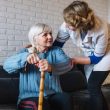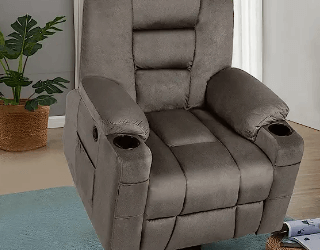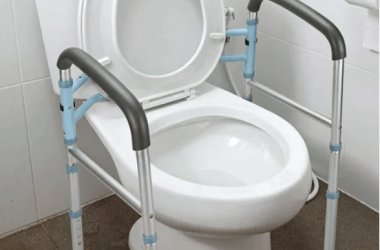As people get older, they may face mobility issues and even find it difficult to stand up. You can play your part and help the elderly stand up in several ways.
Mobility issues in seniors may occur due to joint problems like arthritis, back pain, weak muscles, and balance issues. Mobility problems can lead to falls and falls can compromise the health, well-being, and independence of the seniors.
Falling can be a cause of serious injuries leading to major physical consequences in people aged 65 and older. They increase health care costs, are a financial burden, and can even prove fatal. As such, fall prevention in seniors is important for their physical, psychological, and emotional well-being.
If senior parent well-being is your priority, then you must keep a watch on them so that you are aware of any health or mobility issues that they may face.
Do you think that mobility only refers to walking?
No, it also includes getting up from chairs, sofas, beds, toilets, and bathing. Standing up from a sitting position or the bed can be daunting for seniors with mobility issues and perhaps painful as well.
Seniors need practical help and you need information on how you can offer this assistance either manually, or with the use of various assistive devices so that the senior is independent and comfortable.
When does the senior need standing-up help?
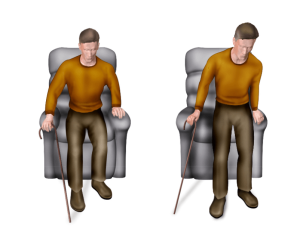
You must observe your elderly parent over a few days and nights. As he or she carries out the daily routine, you should check out if and when they are uncomfortable or in distress. Often seniors do not communicate their needs as they don’t want to be dependent or be perceived as a burden.
If you see signs of a struggle while getting up from any position, walking, or carrying out daily activities, you can look for ways to help.
How do you know that your elderly parent needs help standing up? When he or she :
- Finds it difficult to stand up from a sitting position
- Appears unsteady and not stable on the feet when standing
- Steadies himself using furniture or walls for support, while standing or walking
- Talks about his fears and anxiety related to this problem
- Gets tired while walking or even moving slowly for a bit
- Voices discomfort or pain in legs, joints, and back when standing
- Has a history of falls when trying to stand or walk
- Shows signs of exhaustion or moving slowly after standing
- Complains of pain in legs, back, or joints when standing
One or more of these signifies possible problems.
How do you help the elderly stand up?
You must engage in conversation with your senior to check out whether or not he needs help and is willing to accept it. Most seniors are unhappy to ask for help since it dents their dignity and autonomy.
If you feel that your senior seems to need help, open a dialogue and talk openly about what you have noticed and identified. Aim to see his or her point of view regarding physical problems and how they impact him physically and psychologically.
Listen attentively and non-judgmentally. Understand the thoughts and fears that may arise and offer reassurance that you only want to help in the best way possible, not encroaching on independence and autonomy.
It is up to you to see that the senior understands the potential problems and that you assuage his discomfort and anxiety.
This dialogue will prove to be the foundation of the possible assistance that your senior parent can use.
Here are some questions that you can ask:

It is sure that active involvement can alleviate anxieties and build trust.
This conversation will be the cornerstone for any subsequent assistance. Here are some questions to ask :
- What trouble do you have when trying to stand?
- Does it pain anywhere when you are trying to stand and how does that feel?
- Is it troublesome constantly or once in a while?
- What do you do when you are alone? Do you put weight on your hands?
- Do you have any go-around for this problem? Do your hacks work?
- Do you hold onto any furniture to help you get up?
The aim here isn’t to play doctor or diagnose, but rather to have a friendly conversation with your senior to understand the standing up difficulties and propose an assistance.
Then you can ask : “Would it be okay if I give you a hand when you’re standing up?”. This is to open up the discussion about providing assistance in a respectful manner.
How to give manual help for your senior to stand up

If the senior is amenable to your help in getting up, you can provide manual assistance.
Here is how you can do this safely, step-by-step:
- Go towards him or her slowly.
- Inform him that you will be helping him to get up. He should be aware of this and allow you to do so.
- Put one arm under his and also hold his hand with yours. Your other arm is used to give support to his back. This action should be simultaneous. Both your arms should offer firm, but not heavy-handed, support. You will soon get the hang of this.
- Before you do this, ask him to push upwards with his legs, as you are lifting him. Both of you should work in tandem. Do not be in a hurry.
- As he gets up with your support, make sure that he is stable on his feet before you release your support. If required, continue with the arm and back holding till he or she is comfortable and stable.
There are other techniques that professionals use, for exemple, by placing one hand at the senior back and one at his front :
Remember, safety is the priority …
so, if at any point either you or the person you’re assisting feels uncomfortable or unsafe, stop and reassess the situation.
Depending on the kind of mobility issues the senior experiences, professional caregivers may use another technique. This may be by using one hand on the back and the other in the front for greater body support.
And always, safety is of utmost importance. You should be able to bear the weight, if necessary while staying stable yourself. If the senior is uncomfortable, unstable, or feels unsafe, you should reassess the method you are using.
What happens when you are not around? You can get a range of aids that will help your senior become less dependent.
Devices that reduce discomfort and help seniors get up easily
Many seniors only require some help. Thankfully, there are many assistive devices readily available so that he or she is not helpless when nobody is around.
These have different pros and cons and may be used in varied places as well. Assistive devices include lift chairs, canes, grab bars, toilet standing aids like frames, devices that help to get in and out of the bath, couch standing aids, bed standing aids, and stander handy bars.
Let us discuss these in greater detail, so you can decide which ones will be of help.
Many seniors only require some help. Thankfully, there are many assistive devices readily available so that he or she is not helpless when nobody is around.
These have different pros and cons and may be used in varied places as well. Assistive devices include lift chairs, canes, grab bars, toilet standing aids like frames, devices that help to get in and out of the bath, couch standing aids, bed standing aids, and stander handy bars.
Let us discuss these in greater detail, so you can decide which ones will be of help :
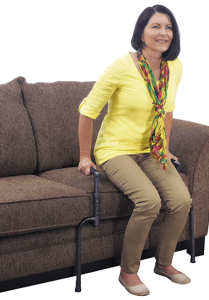
Chair Assists: These are portable and affordable and can be quite effective as well. They may be inflatable or use gas springs that help in the raising.
Grab Bars: These are extremely useful and can be easily installed on walls. You can put them at a height that is geared according to where they are comfortable for the seniors to hold. They are particularly used in bathrooms or in wet places, where there are higher chances of slipping.
Lift Chairs: These chairs are comfortable to sit in and get out of as they have built-in mechanisms that help seniors stand by tilting the chair forward. They may come as multi-functional chairs, including reclining, rocking, and offering a footrest, and usually have an easy-to-use remote or button.
Toilet Frames and Raised Toilet Seats: Sitting on the toilet seat and getting up can be stressful for seniors with mobility issues. Raised toilet seats fit firmly on top of existing seats. Toilet frames are placed around the toilet and have arms to help provide leverage to get up.
Canes: Simple canes should be used with caution as they may slip even if they have rubber at the bottom. Canes with three of four supports are firmer and safer to use.
Couch and Bed Standing Aids: Getting up from a couch or bed, even if it is at the right height can be problematic. Here, couch and bed standing aids can be of help as they are secured to the couch or bed and give leverage for help in standing up.
Stander HandyBar: Often used when traveling with a senior, a stander handybar is a portable handle that can be inserted into any U-shaped door latch or striker. It provides for standing up.
Furniture Raisers: You can get special and easy-to-use furniture raisers that can increase the height of furniture like couches, sofas, and chairs without having to buy new stuff.
Depending on the mobility issues different devices may be required in different places.
Conclusion:
It may not be feasible for you to be always around to help your senior get up. Seniors, too, don’t like to be dependent on someone constantly. Assistive devices of various kinds and for different purposes can help your senior keep his independence, be safe, and improve his quality of life physically, emotionally, and psychologically.
Just make sure that you get the right ones and that your senior is comfortable with them before leaving him or her alone.

A seasoned SEO specialist and a writer for gaming, senior well-being, and ride-on toys. With an analytical mind, sharpened by 14 years of experience as a finance controller. His unique ability to create engaging content is only exceeded by his skill in leveraging SEO strategies, a talent driven by his love for numbers and patterns.






